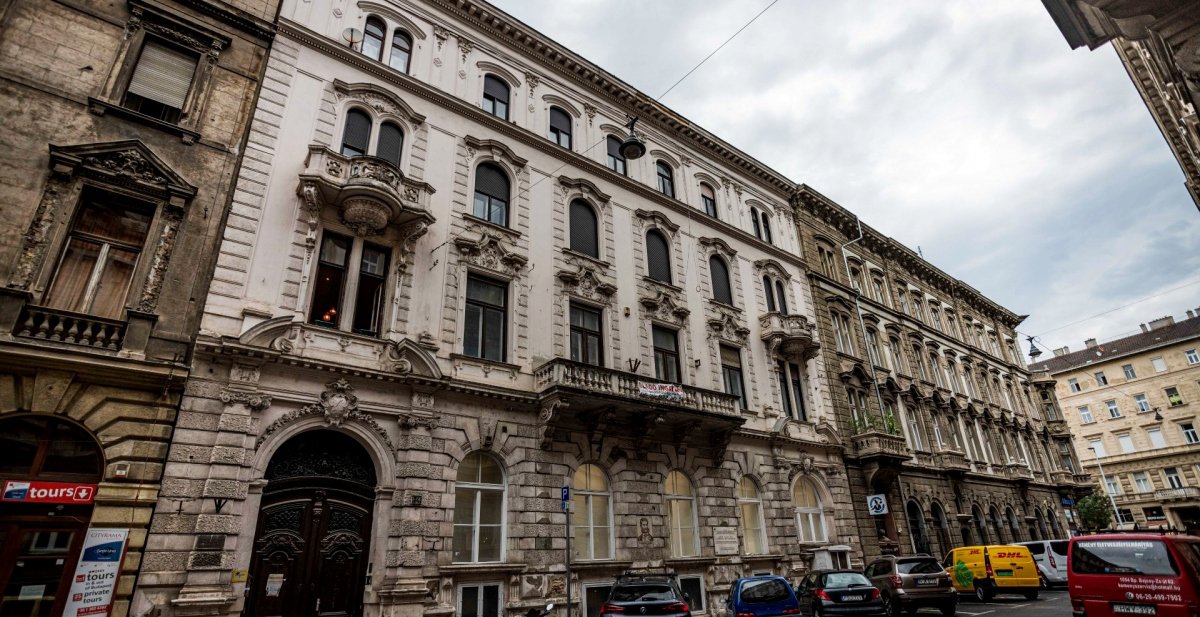The former German Theatre of Pest on today's Vörösmarty Square burned down in 1847, after which German-language theatre in Hungary could not find a real home. The theatre operated on today's Erzsébet Square between 1852 and 1870, but this building had to be demolished due to outdated infrastructure. Then the theatre moved to today's 24 Báthory Street, this public area was then called Wollgasse, i.e. Gyapjú Street, it was named after the warehouses of wool merchants here. In a “competition” with its big rival, the National Theatre, which has become the centre of national acting, the German theatre necessarily lost its leading role after the Compromise.
In the narrow Wool Street, at number 10, the simple theatre building tightly wedged between two houses was very difficult to complete for the opening on 21 December 1869, to perform Adolf Müller's operetta An der blauen Donau. In an article presenting the history of the theatre on 21 December 1889, Pesti Hírlap recalled the following:
"The construction and furnishing work was so far behind that at three o'clock in the afternoon (the performance should have started at seven o'clock) the walls were unplastered, the chairs had not yet been covered with red cloth, the gas had not yet been introduced (...)"
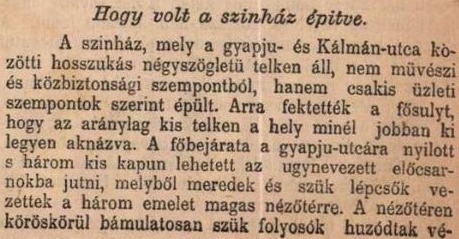
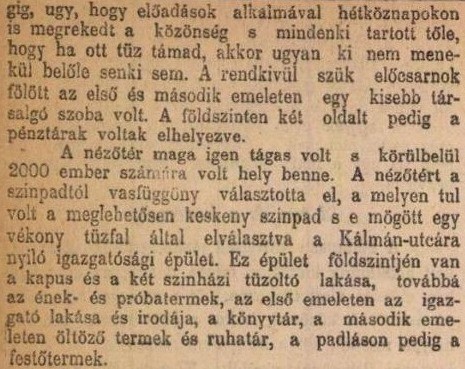
Description of the German Theatre on Gyapjú Street (Source: Pesti Hírlap, 21 December 1889)
The 32-metre-long, 21-metre-wide (at the widest point) auditorium, which opened from the foyer, could accommodate 1,500 to 2,000 people (412 chairs on the ground floor, 70 lodges and a cheap gallery). The interior was characterised by red walls and box railings, gold and white decorations, a red velvet royal box, a central large chandelier, and one- and two-arm candlesticks at the box railings.
The relatively small, 10-metre-wide stage was closed by a firewall, behind which were the board rooms. The lack of backstage may have been the conscious concept of set designer Moritz Lehmann, who also worked at the National Theatre and the Carltheatre in Vienna: he designed the first closed room set without backstage in Hungary in 1856 for the former German Theatre on Erzsébet Square.
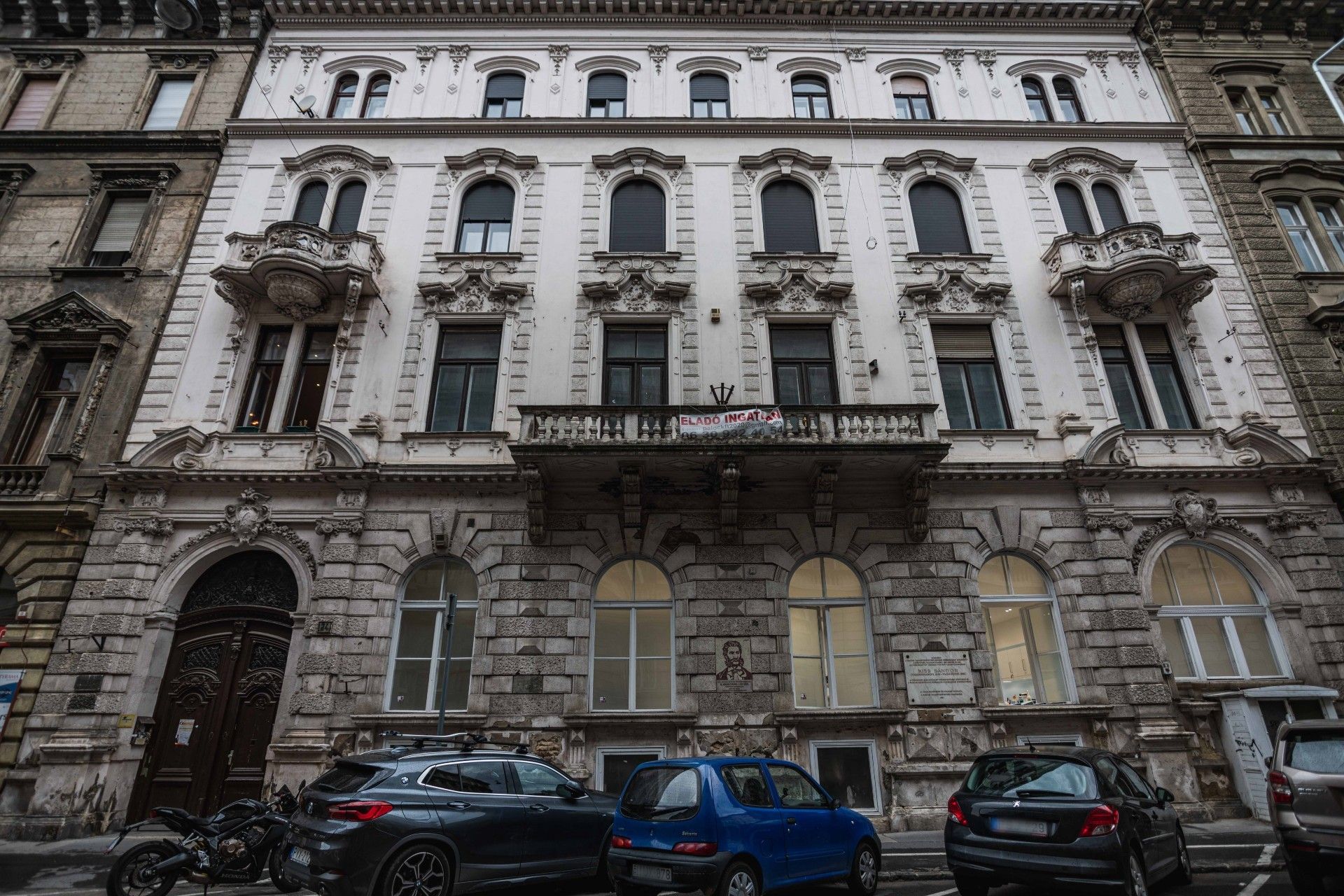
The German Theatre on Gyapjú Street stood on the site of today's house at 24 Báthory Street (Photo: Róbert Juharos/pestbuda.hu)
The repertoire of the theatre mostly included operettas, many of which were performed here immediately after the Austrian premiere. Thus, Johann Strauss Jr. and Franz von Suppé were also considered house composers, often conducting the pieces they composed themselves. The Bat in 1874 and A Night in Venice in 1883 were presented to the Hungarian public here first.
The 'king of waltz', Johann Strauss Jr. conducted The Merry War at the German Theatre on Gyapjú Street in 1882, and on this occasion, he met Mór Jókai, whom he greatly respected. The writer recommended his short novel entitled The Gypsy Baron for setting to music, which depicts the peaceful coexistence of the peoples of the monarchy. The short story and the operetta written for the libretto of Ignác Schnitzer were released to the public almost simultaneously in 1885. A month after the world premiere in Vienna, the German Theatre on Gyapjú Street presented it on 27 November 1885, with an overwhelming audience success.
.jpg)
In the building on the site of the former theatre, the mosaic depicting the portrait of Johann Strauss Jr. is the work of the painter Kornél Zámbó (Photo: Róbert Juharos/pestbuda.hu)
.jpg)
The 'king of waltz' repeatedly conducted the operettas he wrote at the German Theatre on Gyapjú Street (Photo: Róbert Juharos/pestbuda.hu)
Many supporting casts were an important element of the spectacular staging. The 13 December 1885 issue of Fővárosi Lapok reported as follows:
"The director of the German theatre was permitted by the council to rent a locker room for his supporting cast in a building next to the theatre because, for example, many of the cast in The Gypsy Baron had to dress in the cellar."
The Gyapjú Street theatre often hosted charity performances and also functioned as a host theatre, presenting performances by international companies. Among others, the Richard Wagner Theatre performed here, which played Wagner's tetralogy, The Ring of the Nibelung in May 1883 for the first time on Hungarian stage. The four-night cycle, which put performers under extraordinary requirements, was an overwhelming professional and audience success: The Valkyrie even had to be repeated.
They also performed another interesting adaptation of The Song of the Nibelungs, the tragedy of Emanuel Geibel called Brunhild. The play was enchanted by all three of the German Klara Ziegler's guest appearances in 1872, 1873 and 1887, with her well-developed speech technique and expressive facial expressions and gestures.
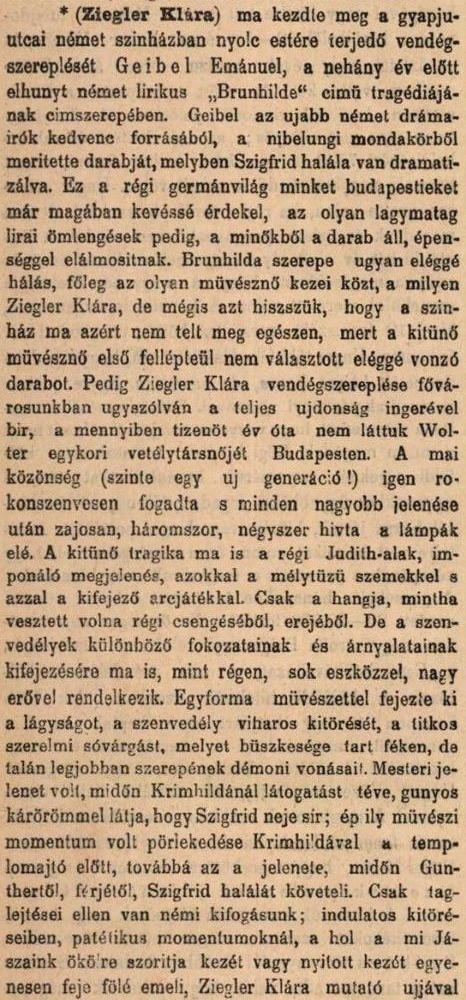

Contemporary theatrical criticism about the Pest performance of Emanuel Geibel's play Brunhild and Klara Ziegler, the celebrated German actress who played the title role (Source: Pesti Hírlap, 17 November 1887)
In addition to Klara Ziegler, the role model of Mari Jászai, Cologne-born Charlotte Wolter, also performed at the Gyapjú Street theatre. It is interesting that the actress, who enriched Hungarian acting with her influence on the art of Mari Jászai, began her career at the Buda Castle Theatre in 1857, and then became an iconic actress of the Victorian era as a member of the Vienna Burgtheatre. She performed on Gyapjú Street in 1880 and 1886 and was enthusiastically received by the audience. In addition to the two rival diva - Wolter and Ziegler - people also applauded Hungarian actresses in the German theatre who had a world career, such as Lilla Bulyovszky Szilágyi, Friderika Bognár and Mária Bárkány.
The popular theatre burned out almost exactly twenty years after its opening. The fire of 20 December 1889, occurred at 3 p.m. in the auditorium above the foyer. The interior was completely destroyed, the facade and foyer remained intact, but had to be demolished soon for safety reasons.
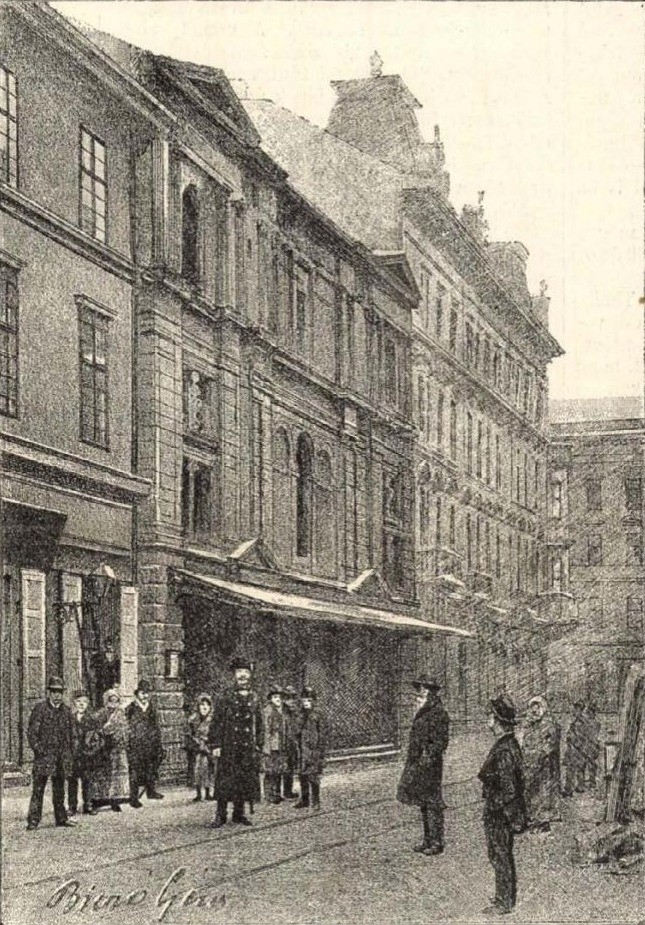
Géza Biczó: The German Theatre on Gyapjú Street after the fire - drawn after a photo by Ede Ellinger (Source: Vasárnapi Újság, 5 January 1890)
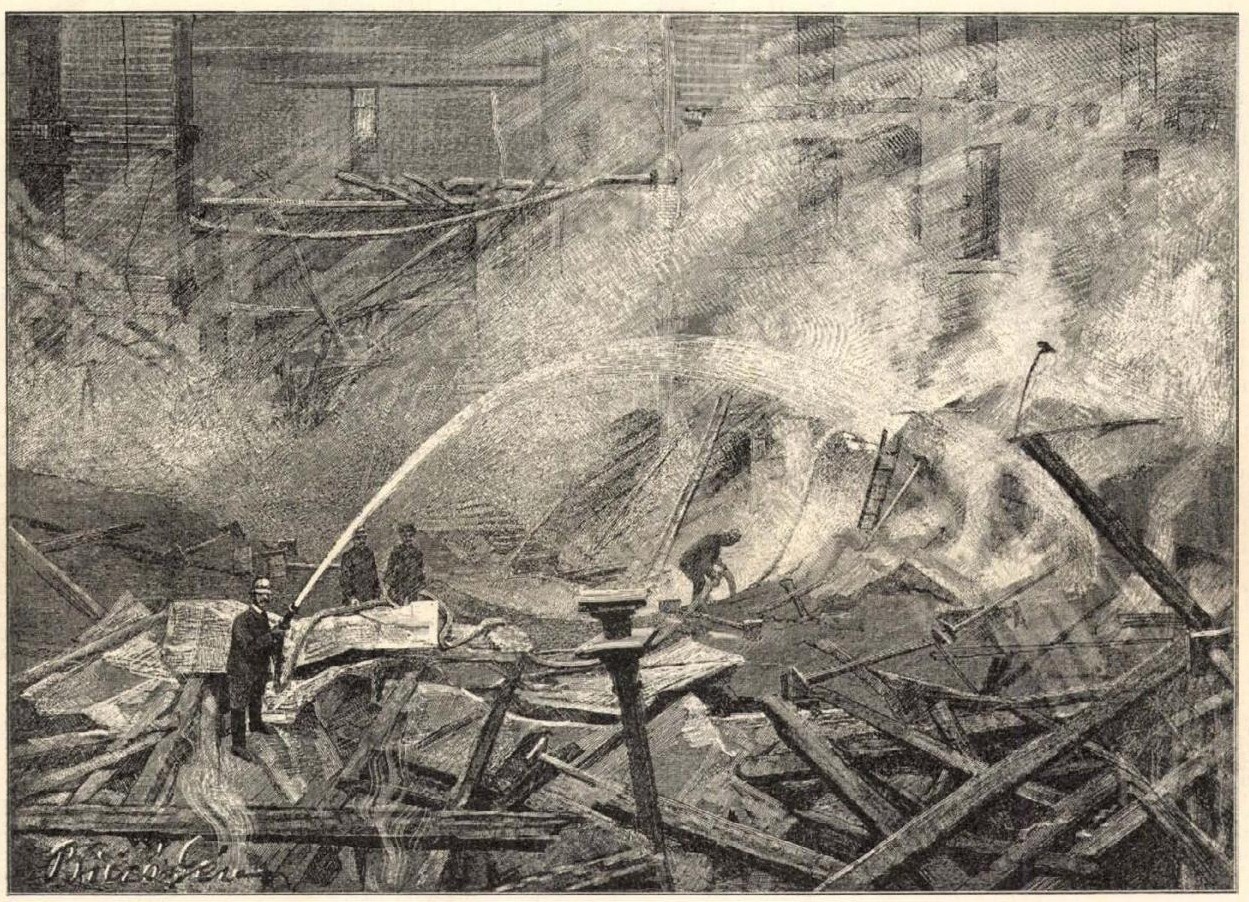
Géza Biczó: The auditorium of the German Theatre on Gyapjú Street after the fire - drawn after a photo by Ede Ellinger (Source: Vasárnapi Újság, 5 January 1890)
The house, built on the site of the former theatre, became the headquarters of the Hungarian Peasants' Association after 1945; a plaque preserves the memory of Sándor Kiss, a smallholder politician who was arrested in 1947 and then emigrated to America in 1956.
.jpg) The house, built on the site of the former theatre was the headquarters of the Hungarian Peasants' Association after 1945 (Photo: Róbert Juharos/pestbuda.hu)
The house, built on the site of the former theatre was the headquarters of the Hungarian Peasants' Association after 1945 (Photo: Róbert Juharos/pestbuda.hu)
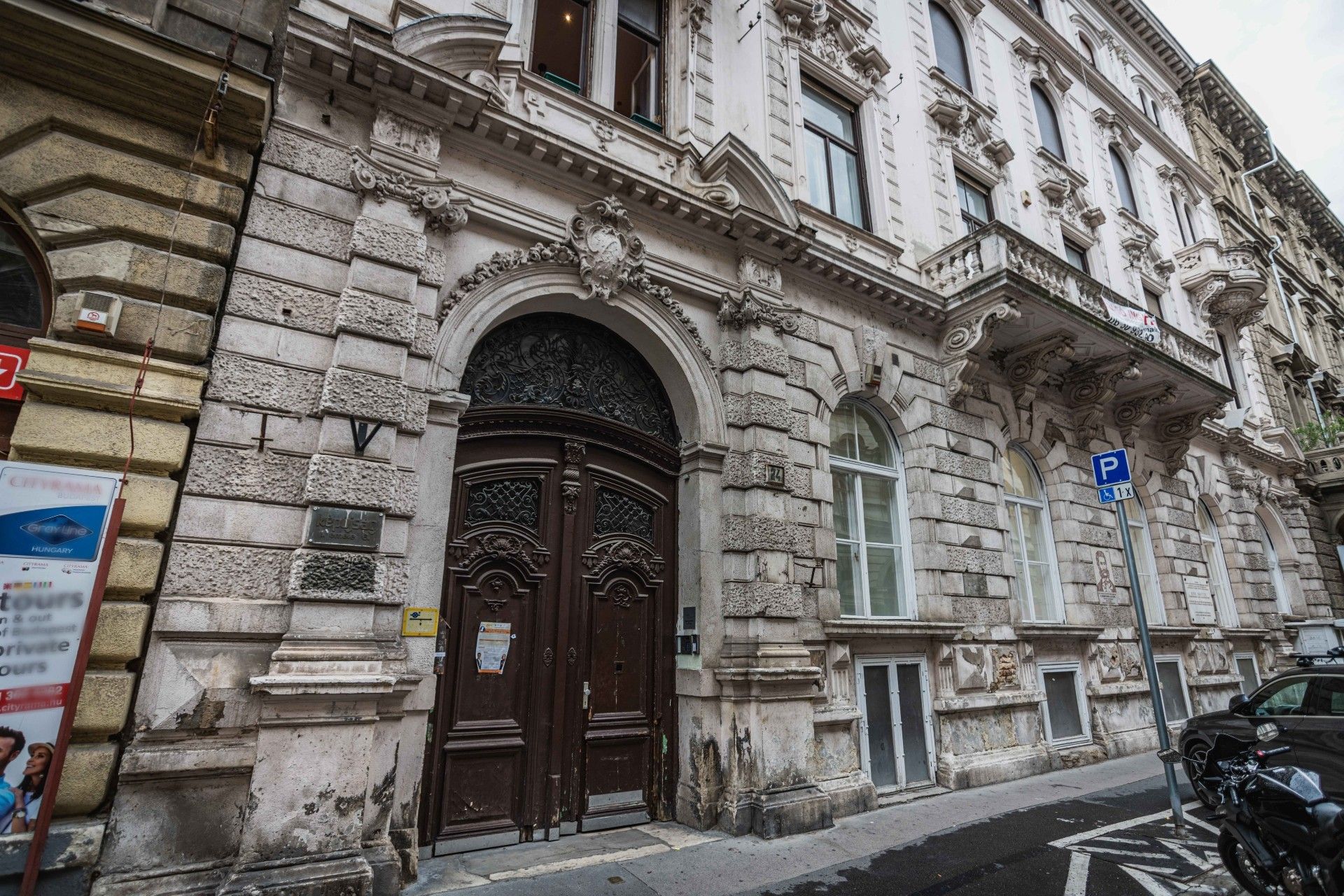
Facade of the house at 24 Báthory Street on the site of the German Theatre on Gyapjú Street (Photo: Róbert Juharos/pestbuda.hu)
Cover photo: The house at 24 Báthory Street in the city centre - the German Theatre on Gyapjú Street stood on the site of the building from 1869 to 1889 (Photo: Róbert Juharos/pestbuda.hu)

